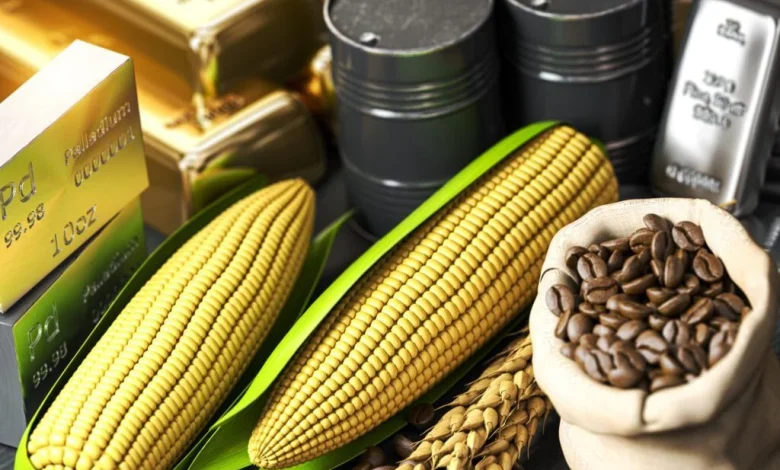
Oil
- Donald Trump announces the imposition of a 25% tariff on countries that decide to import oil from Venezuela. Trump also imposes tariffs on Venezuela itself.
- The new tariffs are set to come into effect from April 2.
- It is worth noting that the new tariffs are primarily aimed at China, which in 2023 imported nearly 70% of all oil shipped from Venezuela.
- Countries that import oil from Venezuela also include Spain, India, Russia, Singapore, and Vietnam.
- Despite heavy sanctions, the United States itself also imports oil from Venezuela. Chevron has obtained an extension of its license until the end of May to produce and export oil from the country.
- Oil remains elevated due to uncertainty surrounding the situation in the Middle East. WTI crude is already testing levels near 70 USD per barrel.
- Additionally, it is worth noting that OPEC+ should partially restore production starting in April, although countries such as Russia, Iraq, and Kazakhstan should reduce their production due to previously exceeding output limits.
- A survey conducted by Bloomberg indicates that over 55% of analysts expect oil to be at the level of 60–70 USD by the end of this year, while around 30% point to the 70–80 USD per barrel range.
- The Bloomberg survey also indicates that the biggest determinant for prices will be the demand outlook associated with economic growth and the recovery prospects in China. Another major factor will be OPEC+ production and potential supply disruptions related to geopolitics.
Crude oil inventories are rising in line with seasonality, although they remain clearly below levels seen a year ago and below the 5-year average. Source: Bloomberg Finance LP, XTB
The crack spread remains elevated, which may suggest potential for a rebound in oil prices in the coming weeks. However, it is important to remember that the crack spread remains high due to uncertainties related to tariffs, and not necessarily because of higher demand. Source: Bloomberg Finance LP, XTB
Crude oil is rebounding sharply and approaching 70 USD per barrel. It is worth noting that the 25-period moving average has crossed the 50-period average from above. The last time this happened, oil prices rose for another two weeks, but then experienced a sharp decline. Source: xStation5
On NYMEX, there was a significant liquidation of short positions in Brent crude. It is worth mentioning that Brent oil trading on NYMEX is very limited (the vast majority takes place on ICE). Nevertheless, net positions on Brent on NYMEX have risen to the highest net level since 2014. Source: Bloomberg Finance LP, XTB
Gas
- Gas prices have come under pressure with a clear change in weather conditions in the U.S., which unexpectedly led to a rise in gas inventories.
- Considering gas consumption in recent days, further increases in gas inventories are expected, which may put pressure on prices in the near term.
- Comparative inventories have reached very low levels, similar to those seen in 2021/2022. While in the longer term this may indicate the emergence of a persistent market deficit, in the short term it may suggest the market is slightly overbought.
- Speculators buying gas have recently been pulling out of the market, which may indicate a potential pullback in prices in the near future.
- The weather forecast for the next two weeks in the U.S. is very favorable, which suggests lower gas consumption than usual.
Comparative inventories have reached very low levels (inverted axis). There is now a high likelihood of inventory increases, considering supply is outpacing demand, slightly earlier than would be expected seasonally. Source: Bloomberg Finance LP, XTB
Gas demand in the U.S. fell below supply earlier than seasonal patterns would suggest. Last week’s data should show an increase of around 20–50 bcf, while this week it should be around 15–20 bcf, considering current consumption. Source: Bloomberg Finance LP, XTB
The 5-year average for inventories suggests that a rebound in stocks should not occur for several more weeks. Source: Bloomberg Finance LP, XTB
Forecasts for early April indicate excessively high temperatures in key heating regions in the U.S., which will most likely mean lower gas demand relative to supply. Source: NOAA
There has been a significant reduction in long positions in natural gas recently, which may indicate investors pulling back from the market in the short term. Source: Bloomberg Finance LP, XTB
A potential head and shoulders pattern has formed on the gas market. The target range of this pattern suggests a move toward the 3 USD/MMBTU level. Source: xStation5
Corn:
- Key dates for the grain and corn markets include March 31, when a report on planned U.S. plantings will be released, and April 2, when the structure of mutual tariffs imposed by the U.S. will be revealed.
- The U.S. may maintain tariffs on Mexico, which could lead to retaliatory tariffs. Mexico is the largest importer of U.S. corn, but in the past has also imposed high tariffs on imports. Mexico may also decide to increase imports from South American countries.
- China is a major global consumer of corn, but its import outlook is limited. China essentially has no significance for the U.S. corn market.
- A clear rise in corn prices in recent months compared to soybeans suggests stronger planting intentions, which could ultimately lead to a rebound in U.S. production this year.
- Trade issues, in turn, may lead to an increase in ending stocks in the U.S.
- Currently, the El Niño phenomenon is no longer observed (the index indicates a mild La Niña event). The El Niño index is fairly well correlated with corn prices and may indicate overvaluation if a production rebound indeed occurs.
- The corn market has seen a massive reduction in speculative long positions.
The El Niño index currently shows no phenomenon (a negative reading indicates La Niña). The correlation may suggest corn is overvalued. Source: Bloomberg Finance LP, XTB
Corn prices remain elevated compared to soybeans, wheat, and ethanol. Source: Bloomberg Finance LP, XTB
Ending stocks in the U.S. justify current prices. However, if ending stocks are estimated to be larger in the near future, it may turn out that prices are significantly elevated relative to fundamentals. Source: Bloomberg Finance LP, XTB
Corn prices saw a sharp pullback at the end of February. At the moment, however, we are seeing consolidation in the form of a triangle pattern. If this is a continuation pattern, the breakdown range suggests potential movement toward 430 cents per bushel. On the other hand, if a breakout occurs to the upside, the pattern range points to nearly 500 cents per bushel. Source: xStation5
Cocoa:
- Cocoa prices attempted to rebound at the beginning of the new week, along with fresh data on cocoa deliveries to ports in Côte d’Ivoire.
- Latest figures show that as of March 23, 1.43 million tonnes of cocoa had been delivered — a level 12% higher than the same period last year. At the same time, it’s important to remember that in December, there was more than a 35% year-over-year surplus.
- However, there is currently a lack of buyers on the market following a recent sizable reduction in long positions.
- Recently, there has been a noticeable increase in cocoa inventories on exchanges. Currently, U.S. ports hold nearly 1.8 million bags, compared to a 21-year low of 1.26 million bags in January.
- European port inventories rose from 20,000 bags to over 50,000 bags, the highest level since September 2024.
- Expectations for the mid-crop season in Côte d’Ivoire, which begins in April, point to production of around 400,000 tonnes — a level 9% lower than last year’s 440,000 tonnes.
Inventories in European ports are rising more strongly than in U.S. ports. Source: Bloomberg Finance LP, XTB
The reduction of long positions in the cocoa market continues. Source: Bloomberg Finance LP, XTB
Cocoa prices have dropped significantly since the beginning of this year. The 5-year average now points to a potential bottom, while the long-term average indicates a local bottom within the next 2–3 weeks. Source: Bloomberg Finance LP, XTB
Cocoa prices are holding near 8,000 USD per tonne, also reacting to support around the 78.6% retracement of the last major rally. The key demand zone remains near 7,000 USD per tonne. If the mid-crop season turns out worse than expected, reaching a local bottom may be possible soon. Source: xStation5
The material on this page does not constitute financial advice and does not take into account your level of understanding, investment objectives, financial situation or any other specific needs. All information provided, including opinions, market research, mathematical results and technical analyzes published on the Website or transmitted To you by other means, it is provided for information purposes only and should in no way be construed as an offer or solicitation for a transaction in any financial instrument, nor should the information provided be construed as advice of a legal or financial nature on which any investment decisions you make should be based exclusively To your level of understanding, investment objectives, financial situation, or other specific needs, any decision to act on the information published on the Website or sent to you by other means is entirely at your own risk if you In doubt or unsure about your understanding of a particular product, instrument, service or transaction, you should seek professional or legal advice before trading. Investing in CFDs carries a high level of risk, as they are leveraged products and have small movements Often the market can result in much larger movements in the value of your investment, and this can work against you or in your favor. Please ensure you fully understand the risks involved, taking into account investments objectives and level of experience, before trading and, if necessary, seek independent advice.






